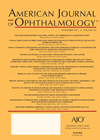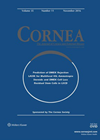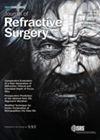You searched for "acuity"
Certifying patients as visually impaired: the start of a journey
1 October 2019
| Patrick Hughes
|
EYE - General
In March 2017 there were 290,475 people registered as either visually impaired or severely visually impaired in the UK [1]. Patients registered as sight impaired benefit from financial support as well as practical help. Practical help is provided by social...
Intravitreal Ziv-Aflibercept: safety analysis
7 December 2020
| Su Young
|
EYE - Vitreo-Retinal
Ziv-Aflibercept (Zaltrap; Sanofi-Aventis U.S LLS, Bridgewater, NJ) was originally introduced as an intravenous formulation for metastatic colorectal cancer. The adoption of Ziv-Aflibercept in ophthalmic practice was similar to bevacizumab, and reports have previously examined one to two year visual outcomes...
Profile of presentation, follow-up and management of orbital myositis
1 August 2025
| Fiona Rowe (Prof)
|
EYE - Strabismus
This retrospective study reviewed the demographic characteristics of patients with orbital myositis, their clinical profile, management options, outcomes and predictive factors for recurrence. The study included 52 patients (55 eyes; 3% bilateral involvement), 36 females, with mean age at presentation...
Management of diabetic macular oedema (DMO)
1 February 2018
| Kurt Spiteri Cornish
|
EYE - Vitreo-Retinal
|
Anti-VEGF therapy, Diabetic macular edema, Steroids
The authors present guidelines on current diagnostic and therapeutic procedures in the management of DMO. Fluorescein angiography (FA) and optical coherence tomography (OCT) are recommended before starting treatment to help diagnose and stage DMO, and can be repeated if there...
Does intravitreal bevacizumab help in diabetic retinopathy related vitreous haemorrhage?
1 October 2017
| Efrosini Papagiannuli
|
EYE - Vitreo-Retinal
This retrospective, interventional case series, aimed to assess the effectiveness of intravitreal bevacizumab (IVB) in vitreous haemorrhage secondary to proliferative diabetic retinopathy. The primary outcome was the rate of vitrectomy (PPV) after IVB, with secondary outcomes the number of IVB...
Intravitreal bevacizumab vs. ranibizumab in the treatment of macular oedema due to BRVO
This is a randomised, prospective, non-inferiority trial of 75 patients with macular oedema due to a branch retinal vein occlusion (BRVO) who received intravitreal injections of ranibizumab or bevacizumab after 1:1 block randomisation. This study is to measure the difference...Retinal pigment epithelium tears
1 June 2016
| Sofia Rokerya
|
EYE - Vitreo-Retinal
In this paper the authors review the current knowledge of retinal pigment epithelium (RPE) tears. Although rare these can cause loss of visual acuity. They can occur spontaneously in pigment epithelial detachment (PED) due to occult choroidal neovascularisation (CNV), retinal...
Outcomes of hemi DMEK
This was a prospective, interventional case series of 10 eyes from 10 patients who underwent hemi-descemet membrane endothelial keratoplasty (hemi-DMEK) for Fuchs endothelial dystrophy. The surgical technique for hemi DMEK procedure was similar to the circular DMEK except that a...Secondary iris-claw anterior chamber lens implantation in patients with aphakia without capsular support
1 August 2014
| Jonathan Chan
|
EYE - Cataract, EYE - Refractive
|
Anterior chamber, Cornea, Lens and zonules, Optics and Refraction, Treatment Surgery
This retrospective, non-randomised, non-comparative, interventional study including 128 eyes of 124 patients that presented with aphakia with no capsular support. All patients consecutively underwent Artisan iris-claw intraocular lense (IOL) implantation between 1997 and 2010. The inclusion criteria were: aphakic without...
How does cataract surgery affect eyes with wet AMD?
In this retrospective cohort study the authors’ primary objective was to assess whether cataract surgery in eyes with wet age-related macular degeneration (AMD), triggered its progression. The surgical group comprised of 40 eyes versus 42 eyes in the non-surgical control...Comparison of bilateral lateral and unilateral recession resection for IXT
1 December 2013
| Jonathan Chan
|
EYE - Paediatrics, EYE - Strabismus
|
Child health (paediatrics), Muscles, Treatment Surgery
This is a retrospective review study of patients between the ages of three and 15 years old with the basic type of intermittent exotropia (IXT) who had strabismus surgery between January 2003 to September 2009. There were 85 patients included...














